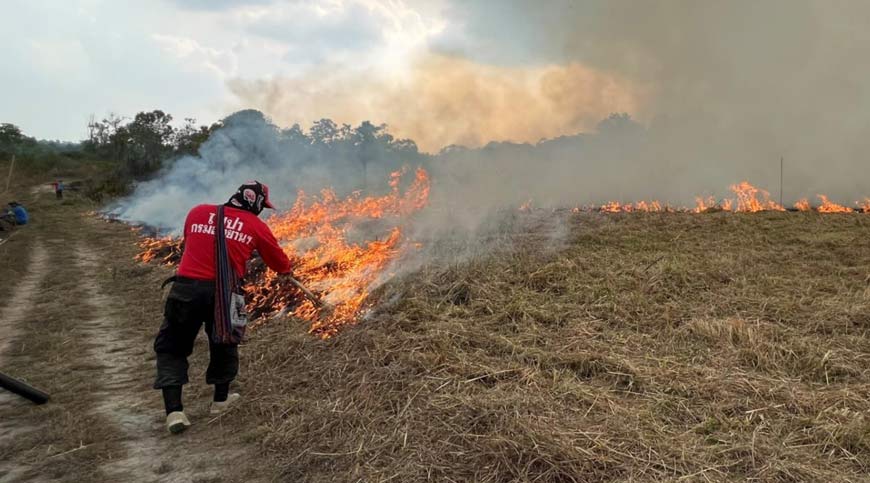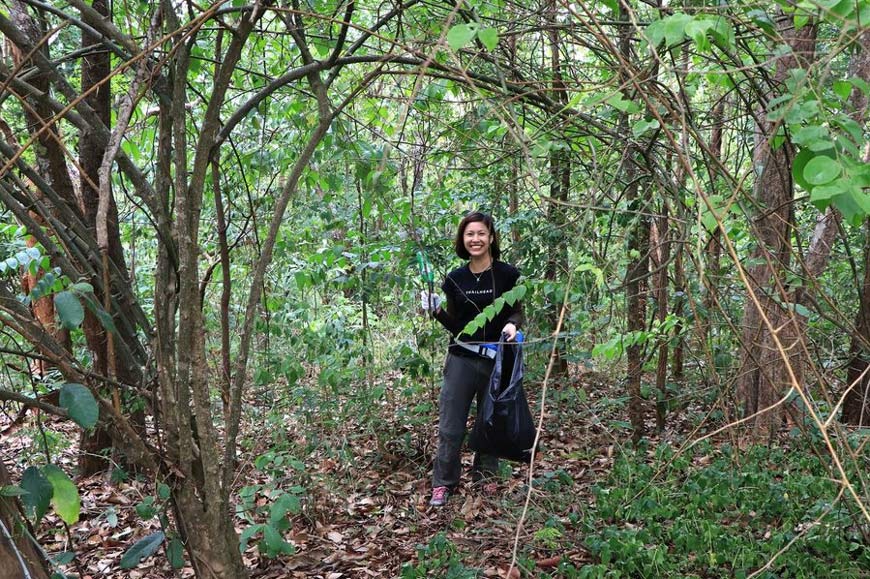Thailand has faced a devastating challenge: wildfires. In 2023 alone, the nation grappled with an alarming loss of roughly 13% of its national forest heritage. This equates to wildfires ravaging an astonishing 13 million rai, with the northern region bearing the brunt—around 9 million rai. As harrowing as these statistics are, they highlight the pressing need to understand and combat the root causes and potential solutions of these wildfires.
The Area Conservation Management Office 16 is responsible for more than 7.6 million rai of forest land spanning the Chiang Mai and Lamphun provinces. Deciduous forests, constituting a significant 62.88% of this expanse, are dense with leaves, twigs, and other combustible materials. Altogether, these forests hold around 4,314,014.98 tons of potential fuel, all at risk of igniting under the right (or wrong) conditions.
However, risks can be mitigated while harnessing the benefits of fire. The key lies in “Prescribed or Early Burning”, not in the ‘Zero Burning’ approach.

Gleaning Wisdom for Fire Management: A Global Perspective with Local Application
Dr. Watcharapong Thatchayapong, Assistant Professor at Chiang Mai University, emphasizes the importance of global insights. Countries like the United States and Australia have shown that wildfire management, especially regarding fuel, must be tailored to the specific forest types of a region.
Yellowstone National Park, characterized by homogenous forests, saw a shift in its fire management policy in the 20th century. Initially, from 1886, the approach was to suppress all fires. However, recognizing the ecological role of fire, the park changed its approach in 1972, allowing natural fires to burn. Then the massive fire outbreak in 1988 served as a wakeup call. The year 1992 witnessed the U.S. adapting its fire management policy based on extensive fire ecology studies, realizing that letting nature take its course might not always be the best solution. Now, the strategy involves working closely with indigenous tribes and emphasizing cultural geography. Controlling the fuel helps moderate the fire’s intensity, temperature, and overall environmental effect.

Crown fire at Grant Village in Yellowstone National Park, July 23, 1988. Credit: Jeff Henry National Park Service Wikimedia
Chiang Mai’s Evolving Fire Narrative
Drawing inspiration from Yellowstone’s experiences, Chiang Mai, with its unique ecosystems and socio-cultural backdrop, can adapt those lessons for its benefit. Fire management in this region requires adaptability, with strategies attuned to its distinct ecology, timing, seasonal variations, and water availability.
Dr. Watcharapong Thatchayapong stresses that there’s no one-size-fits-all solution. Chiang Mai’s path involves integrating global insights with its unique characteristics to develop a lasting, effective fire management strategy.
Fire management hinges on understanding forest ecology. Fires can shape forests, and with controlled burns, we promote their health. Guided by weather patterns and knowledge of the forest, collaboration between locals and officials is essential for this approach to succeed.
Anticipating the challenges of 2024, especially the impact of El Niño and potential drought, underscores the importance of proactive fire management.

Controlled burning: photo from www.seub.or.th
Fire has the dual nature of being beneficial and destructive. When managed wisely, it becomes an essential tool for maintaining forest health. The solution isn’t just to suppress wildfires but to understand and manage them strategically. Controlled burning methods, such as Prescribed or Early Burning, play a crucial role in this. Drawing from global experiences, prioritizing community engagement, and implementing effective fire management plans will ensure our forests thrive and remain safe for the coming generations.
Special thanks to the Breath Council Organization and Dr. Watcharapong Thatchayapong, Assistant Professor at Chiang Mai University.
